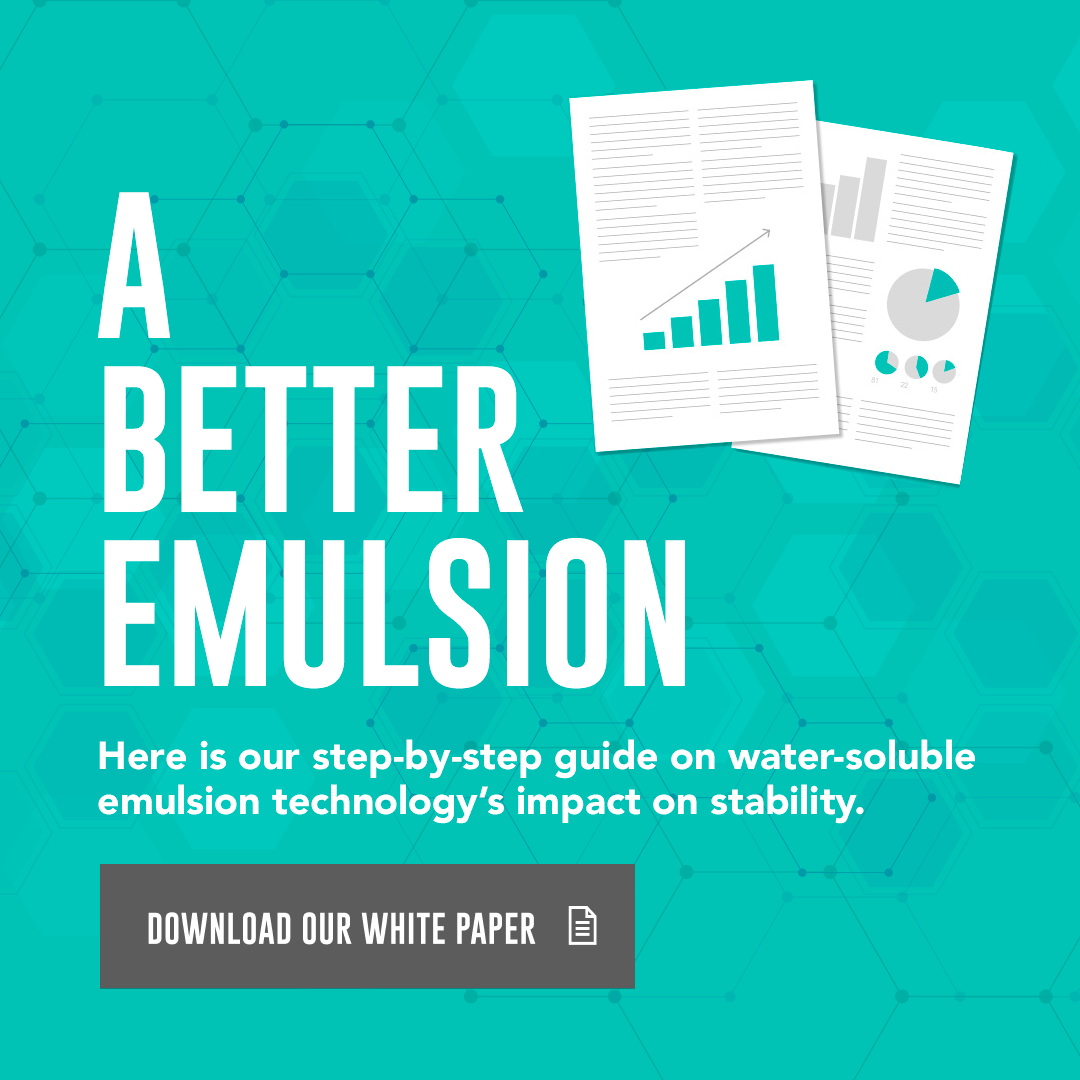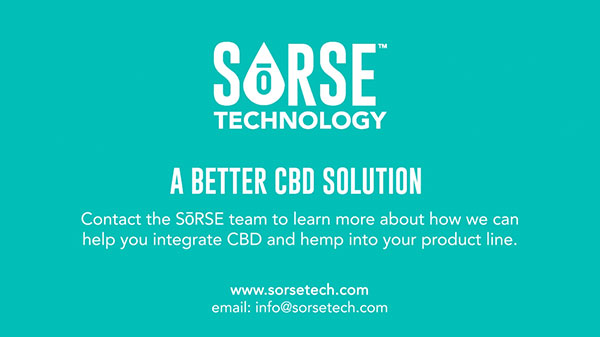We live in a very exciting time, when the cannabis beverage market is quickly becoming the next frontier for established alcohol brands. What used to be fringe is now going mainstream. Cannabis products are legal in more markets than ever, while consumers are increasingly shifting gears from alcohol to cannabis.
But for beverage brands, there is a fly in the ointment: as an ingredient, alcohol is not cannabis. That is, cannabis doesn’t behave like alcohol does in a beverage. While both ingredients have intoxicating effects, the chemical differences—and the challenges that accompany them—are a world apart.
For established beverage producers entering this space, success hinges on understanding and adapting to these new chemical realities to maintain that same standard of quality, consistency, and reliability that defines your legacy brand.
You may have decades, sometimes centuries, of expertise in brewing and distillation, but that won’t help you with the steep learning curve when it comes to working with cannabinoids. To start, unlike alcohol, cannabinoids are not water-soluble, so they must be emulsified before being added to a beverage.
In this post, I will share the key factors every beverage manufacturer should know before developing their first cannabis drink, from emulsification, packaging, and flavor formulation to long-term testing.
Cannabis beverages are the next frontier
In 2024, cannabis beverage sales in the US surpassed the $1 billion mark, with the total market potential estimated at $9.9 to $14.9 billion, according to a 2025 Whitney Economics report. In the U.S., the cannabis beverage market included roughly 750 brands, with about 200 currently selling through licensed marijuana retailers. Now, the world’s largest alcoholic beverage makers are taking note.
According to the recent Reuters article Big Alcohol prepares to fight back as buzzy cannabis drinks steal sales,
Corona brewer Constellation Brands has been internally researching hemp-based cannabis drinks to weigh its next steps, a source familiar with the company’s thinking said…
Absolut vodka distiller Pernod Ricard has met with Brez, maker of drinks with THC derived from hemp, as recently as last month to discuss a possible investment, Brez’s founder Aaron Nosbisch said…
Molson Coors CEO Gavin Hattersley told Reuters in January he’d be naive to say THC beverages aren’t having an effect “at least in a small way.”
Tilray Brands, the fourth-largest U.S. craft brewer with brands including Montauk and Shock Top, is selling its new hemp-derived THC seltzers through its beer distributors such as United Distributors in Georgia, executives told Reuters in an interview. The company’s THC drinks are for sale in 13 states.
Cannabinoids vs. ethanol: the stability challenge
Before you invest six figures in development, it’s a good idea to first understand the challenges cannabinoids bring to the party. Remember that alcohol and water are completely compatible, each being fully soluble in the other. Cannabinoids, on the other hand, are oils, insoluble in water and thus present significant challenges for inclusion in beverages.
These include:
- Natural hydrophobia Oil dispersion in water, which must be completely uniform and homogeneous for the duration of shelf life
- Bitterness The strong, bitter flavor cannabinoids carry
- Scalping The potential interactions of cannabinoids with can liners or other packaging materials
- Stability The potency stability of the cannabinoid and beverage
- Ingredient interactions The tendency of some specific flavor compounds to attack emulsion stability
Learning to work with cannabinoid emulsions
Why can cannabis be challenging to work with? As I hinted earlier, unlike alcohol, which is completely miscible in water, cannabinoids are oils that can only be “dispersed” in water. Without a proper and stable emulsion, they will quickly recombine (coalesce) and float to the surface, creating an unappetizing creamy layer at the top.
To create stable, uniform dispersions, the oils must first be transformed into an emulsion, also known as micelles (small oil droplets surrounded by an appropriate surfactant).
When properly constructed, emulsified particles or micelles will have very low mass to avoid gravitational separation. They naturally repel each other due to their surface charges, blocking the native bitterness of cannabinoids while providing potency stability and rapid, repeatable effects. So, in short, yes, emulsions are complex systems!
The telltale signs of poor cannabis emulsions
I’ve visited far too many stores and dispensaries and saw too many cannabis beverages with obvious creaming layers at the top or sedimentation layers at the bottom. And even without those obvious fails, some of the available beverages just don’t taste that great. That may be acceptable for the dispensary crowd who want to get as high as possible as fast as possible, but consumers who are making the switch from alcohol expect beverages that are not only well-made (that is, with effective emulsions and predictable effects) but that also taste great every time.
If you’re choosing an emulsion supplier, your best bet for brand integrity is simply to ask for their stability testing data over at least six months; a year is better.
Pro tip 1: Consider and test the packaging
If perfect cannabis emulsions acted out in the world exactly as they do in the lab, this would be a very short article. But packaging is another factor that affects the stability of cannabis beverages.
Cannabinoids, due to their hydrophobic nature, bring a particular challenge to packaging, specifically can liners. In a sense, the cannabinoids are always trying to escape a watery environment.
While glass, polyethylene, and PET are relatively inert, the protective liners used in cans are susceptible to cannabinoid attachment or absorption. This can result in potency loss and call into question the claimed cannabinoid content printed on the label.
You may recall when can liners were made with Bisphenol A (BPA). But due to health and safety concerns, the industry has largely moved away from this material (California Proposition 65 flagged BPA as a potential reproductive toxicant).
With BPA based liners, which were once the gold standard, out of the picture, this has opened the door to “scalping,” a process where the beverage liner absorbs small amounts of chemically active beverage components like flavors and cannabinoids. Scalping can reduce the homogeneity, potency, and stability of your cannabis beverage.
The industry has quickly responded by developing a number of liner choices that help prevent potency loss through scalping, with some options being more effective than others.
In 2019, SōRSE Technology began working with can producers to research liner chemistries that are most resistant to scalping, focusing on Gen II BPANI, also referred to as BPA-NI (Tetramethyl bisphenol F, or TMBPF), which is non-indicated BPA. TMBPF resists scalping because, like BPA, it is fully polymerized when deposited on the metal, so like BPA-based liners, it provides an inert surface and with limited ability to absorb cannabinoids or flavors from the beverage.
The key takeaway here is that you must not only consider the effects of your cannabis emulsion in a lab, but also in the packaging and over time. If you haven’t yet chosen an emulsion provider, ask for their scalping study data over six to 12 months.
Pro tip 2: choose a formulator with food science (not just cannabis) expertise
Once you’ve ensured that your packaging isn’t affecting the quality or stability of your product, it’s time to start thinking about how your other ingredients interact with your cannabis emulsion. Your emulsion may affect the sensory experience and could interact with other ingredients in unforeseen ways.
Here are a few factors to consider:
- Strong solvent characteristics Some flavors have strong solvent characteristics that actually attack the emulsion integrity (a.k.a. the micelle interface). Each class of emulsifier has varying resistance to various compounds, making emulsifier selection a key criterion for long-term stability.
- Beverage densities Beverage densities vary based on the dissolved solids (most often sugar) content, known as the Brix level. As the sugar (or Brix) levels increases, so does the density of the beverage. This increases the tendency of the emulsion to separate, which results in a THC-rich layer floating at the top—and then we have that unappetizing cream layer again.
- Match the emulsion to the drink
- Test every darn flavor If you have multiple beverage flavors, my advice is to test every darn one. Do not make the mistake of testing one or two flavors and extrapolating that data to your other flavors. Because even if your formulation remains stable for months across a dozen flavors, as the SōRSE lab once discovered, there may be an unpredictable chemical reaction linked to the 13th flavor. And that could result in a drastically different product experience for consumers. This is why you must test every flavor, every SKU, in every situation!
Pro tip 3: Protect your cannabis brand with long-term lab testing
For established alcohol brands entering the cannabis beverage space, consumer expectations are going to be high. In alcohol, an established reputation is built over decades (or longer!), and you’ll want to protect that legacy during new forays into cannabis. The best way to preserve your brand’s credibility is through data gathered from long-term, robust testing. In modern parlance, you need to “show the receipts.”
So once your product looks, feels, and tastes great right off the production line, now it’s time for step two: get the data to ensure a positive consumer experience. You don’t know when your customer will take their first sip, so you need to test your beverage not just one day one, but one, three, six, nine, and twelve months later.
By testing at regular intervals throughout the product’s shelf life and at different temperature points, you can gain a clear understanding of if and how flavor interactions, packaging, temperature, and time affect your drink’s cannabinoid potency and the customer experience.
In my opinion, long-term quality testing like this isn’t optional; it forms the foundation of brand reliability in the cannabis beverage category. From what I’ve seen, the reason some pioneering alcohol brands are hesitant or unsuccessful is because they didn’t test their product over time. So some customers had inconsistent experiences, and they opted not to return.
Conclusion
In this post, I noted that alcohol and other beverage brands are making the shift to the estimated $14B cannabis beverage market, and I outlined the common challenges I see for new cannabis beverage makers, including working with emulsions, implementing long-term stability testing, and choosing and testing the right packaging to avoid scalping. I also offered three key tips for success for new cannabis beverage brands: (1) get scalping studies for your packaging (2) use an experienced food science formulator, as flavors and sugars can and do affect the stability of cannabis beverages, and (3) to protect your consumers and your brand, implement long-term product testing.





